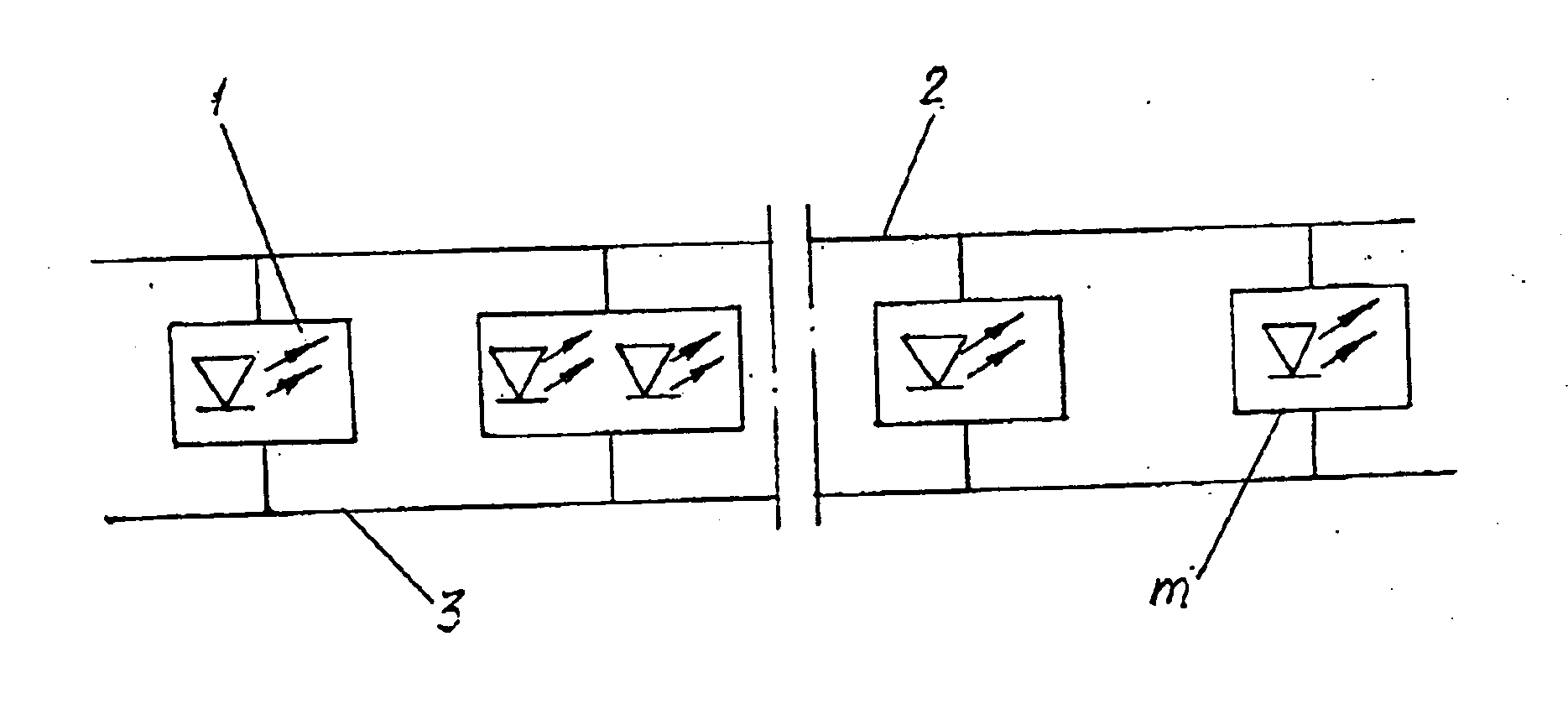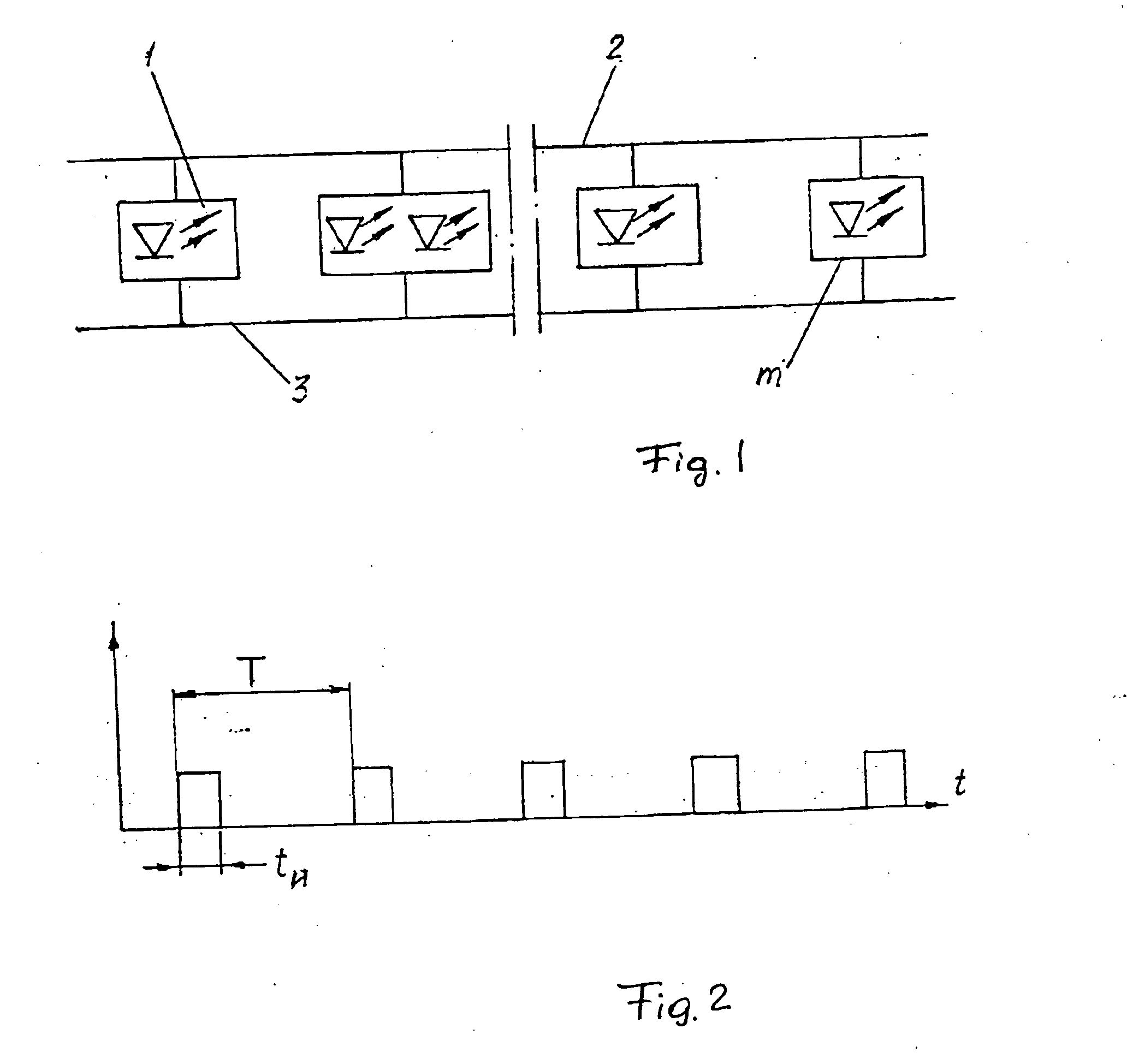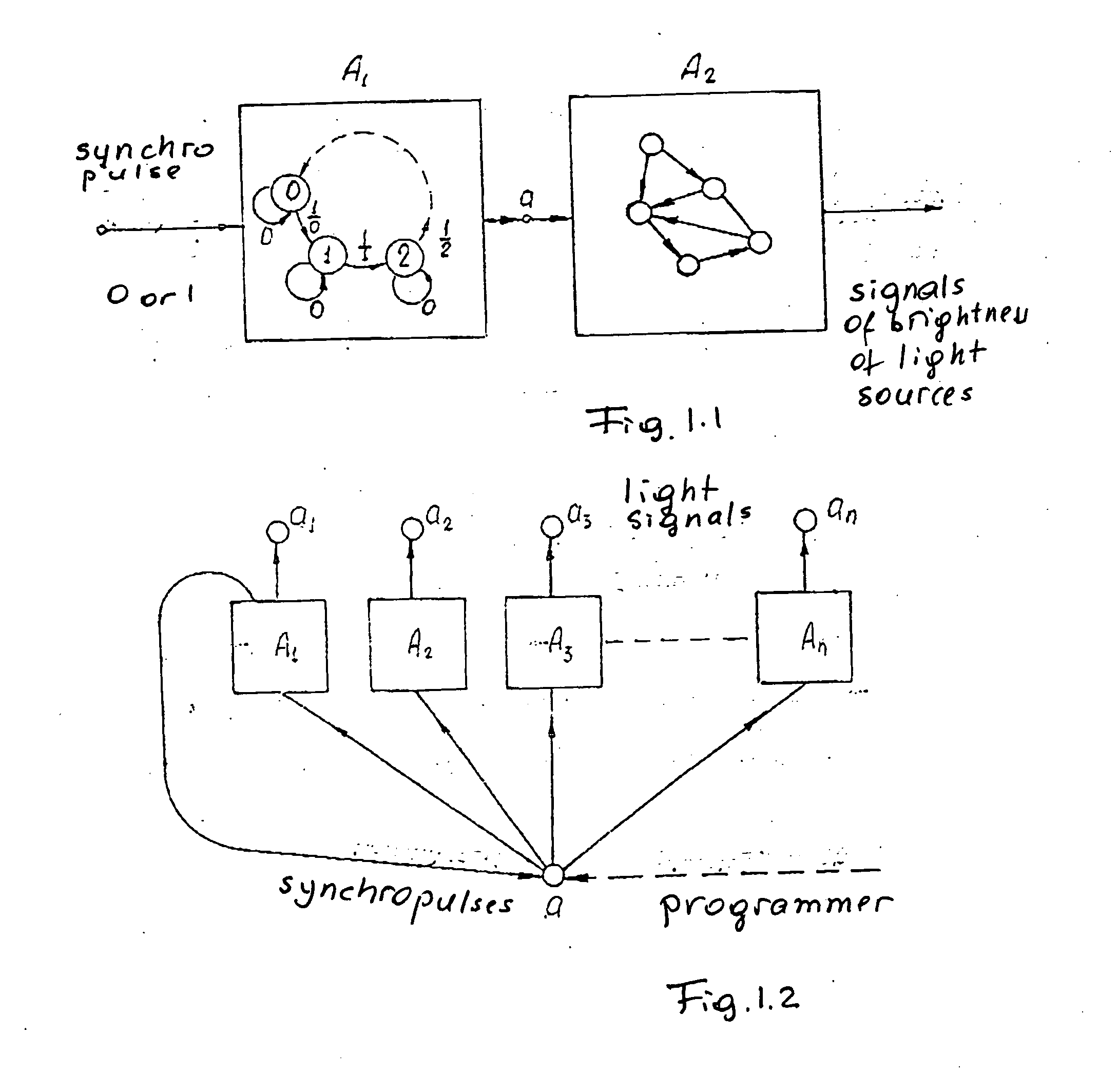Device for dynamic illumination
a dynamic illumination and device technology, applied in static indicating devices, instruments, semiconductor lamps, etc., can solve the problems of redundant light effects, radio noise and noise along the circuit, redundant light effects, etc., to increase the variety of light effects, increase attractiveness, and increase the dynamic nature of light effects
- Summary
- Abstract
- Description
- Claims
- Application Information
AI Technical Summary
Benefits of technology
Problems solved by technology
Method used
Image
Examples
example 1
Light Diode Line
[0053] Each microprocessor operates in accordance with the cycle so as to provide change of brightness and color in a given concrete location in accordance with an individual program, and all of them provide a common light-dynamic effect.
[0054] One module can be represented as a unity of two automatic elements as shown in FIG. 1.1. One of them operates as a counter of conditions 0, 1, 2 . . . in response to the supplied synchro pulse (input signal I). The synchro pulse generates one of its modules, by supplying it to the electric bus.
[0055] Therefore the automatic element A1 operates in accordance with the cycle A1. Physically, it is simply one register with zeroing after reaching the condition with the maximum number. A number of its condition represents the output signal of the automatic element A1. This signal is an input signal for the automatic element A2. The automatic element A2 is more complicated. Each of its conditions corresponds to a predetermined cond...
example 2
Illumination of Windows
[0063] For creating an original light-dynamic effect, conventional windows are utilized. For this purpose a light-dispersing image 29 is applied on one or several glasses 28, and a device for introduction of light into the glass is provided. Modular lines 30 of light sources are further provided. All lines are connected with one another by a single electrical bus shown in FIG. 1.3. Since all modules of each line on each window operate in accordance with coordinated programs, it is possible to create a single light-dynamic effect for all illuminated windows.
[0064] When the applied image is changed and applied on neighboring windows, new windows are supplied with additional lines of light sources, which are also connected to the electrical bus. Because of the change of the images and configuration of the system (additional windows) it is necessary to change the program of the light-dynamic effects. Then, all elements which are described in the Example 1 are ma...
example 3
Two-Coordinate Illumination
[0066] The lines 31 of the light sources are assembled into two-coordinate screens shown in FIG. 1.4. Similarly to other cases where the line with a great number of light modules with light sources is utilized, the frequency modulation significantly reduces requirements to electronic circuits. By means of such a “screen”, any image applied to the light-dispersing surface can be illuminated from the front, or the image which is assembled from colored light-dispersing elements can be illuminated as well. The device is substantially analogous to the so-called light-boxes, in which between two matted surfaces with the applied images, an elongated (non-pointed) static light source is arranged. The screen based on the modular lines differs from the light boxes in that it allows to create dynamic two-dimensional light effects. Because of this and because of the advantages of the modular programming devices described herein above, a wide area is provided for desi...
PUM
 Login to View More
Login to View More Abstract
Description
Claims
Application Information
 Login to View More
Login to View More - R&D
- Intellectual Property
- Life Sciences
- Materials
- Tech Scout
- Unparalleled Data Quality
- Higher Quality Content
- 60% Fewer Hallucinations
Browse by: Latest US Patents, China's latest patents, Technical Efficacy Thesaurus, Application Domain, Technology Topic, Popular Technical Reports.
© 2025 PatSnap. All rights reserved.Legal|Privacy policy|Modern Slavery Act Transparency Statement|Sitemap|About US| Contact US: help@patsnap.com



